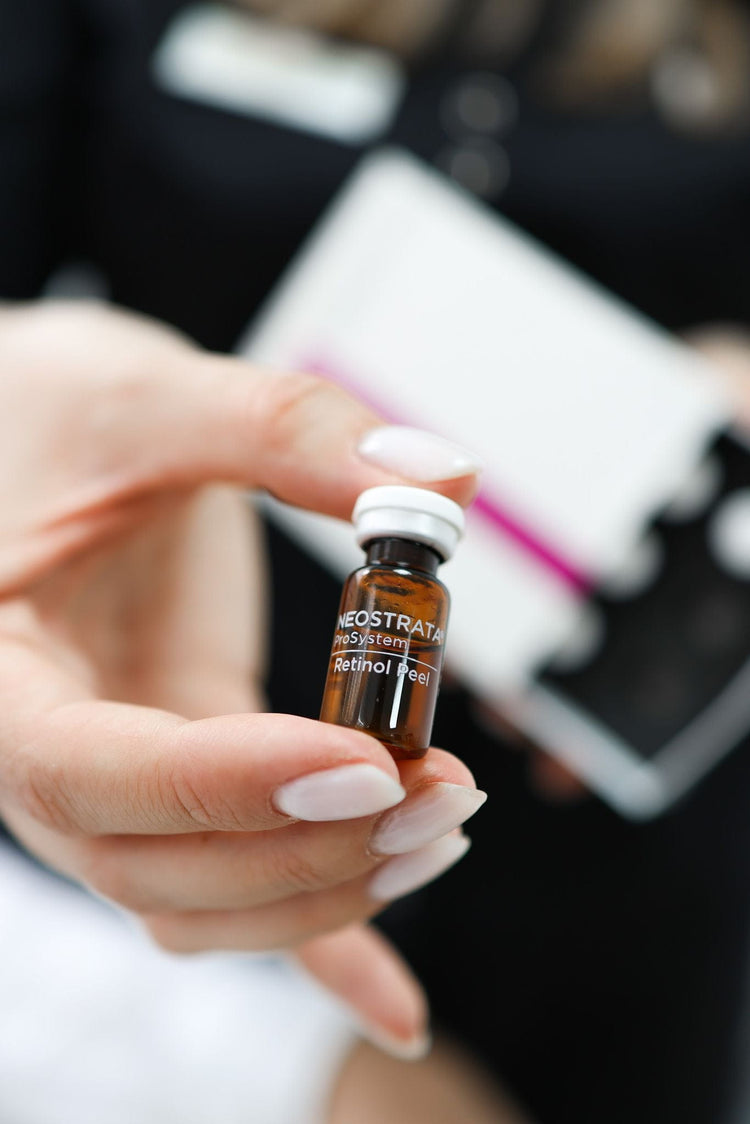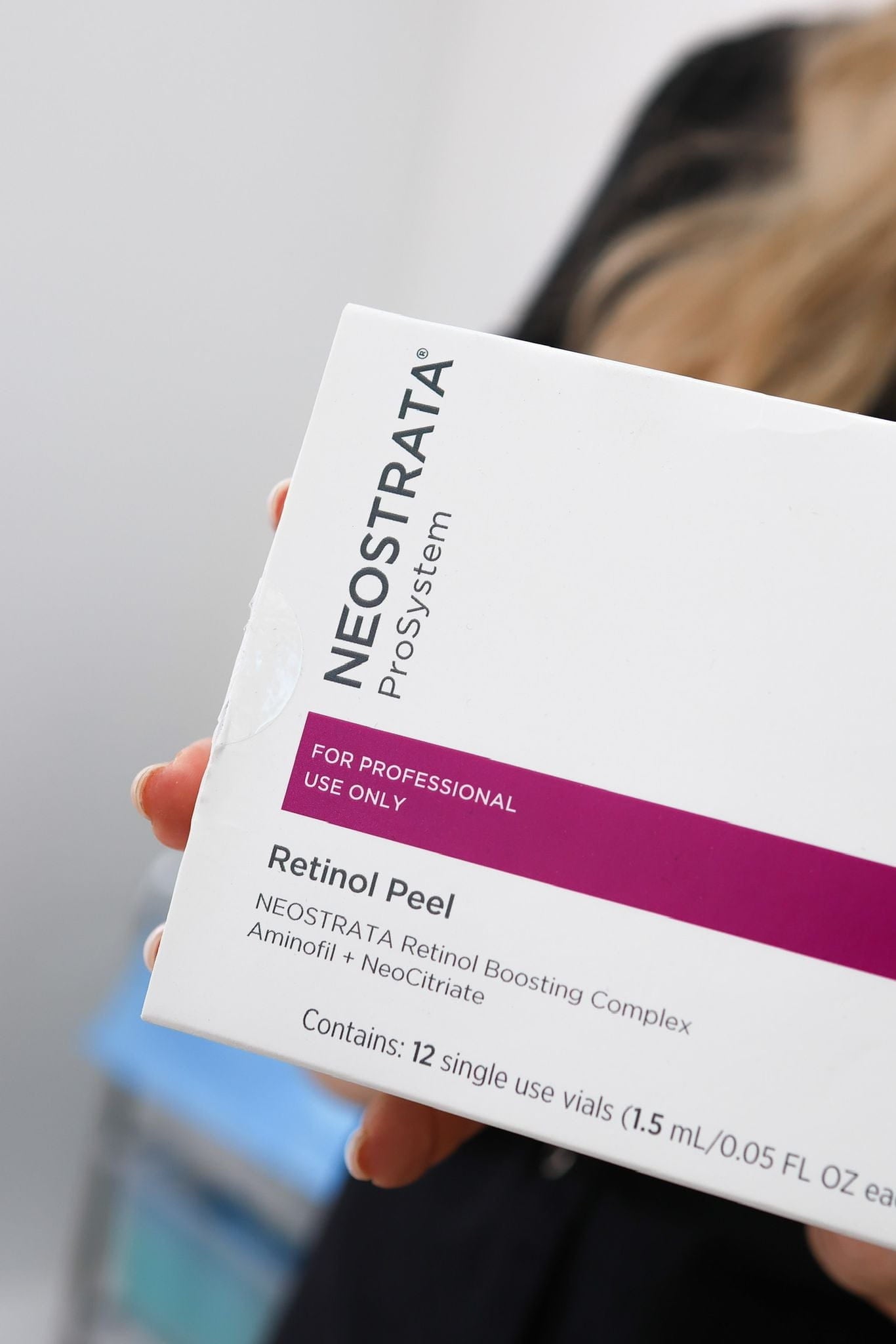Aftercare Tips
A retinol peel can leave your skin feeling refreshed and revitalized, but proper aftercare is crucial for maximizing results and minimizing potential irritation. This guide will provide you with essential tips on how to care for your skin following a retinol peel in Kingston Upon Thames, ensuring a smooth recovery and radiant complexion.
Cleaning
Following a retinol peel, it’s important to gently cleanse your skin twice a day with a mild cleanser specifically formulated for sensitive skin. Avoid using harsh scrubs or soaps as they can irritate the delicate skin post-peel. Pat your skin dry rather than rubbing it.
Protect your skin from the sun by diligently applying broad-spectrum sunscreen with an SPF of 30 or higher every day, even on cloudy days. Sun exposure can cause pigmentation issues and exacerbate any existing redness.
Hydration is key! Use a lightweight, fragrance-free moisturizer to keep your skin hydrated and prevent dryness. You may also consider incorporating a hydrating serum containing hyaluronic acid into your skincare routine.
Resist the urge to pick or scratch any peeling or flaking skin as this can lead to scarring and infection. Allow the natural exfoliation process to occur without interference.
Be patient! It takes time for your skin to fully recover from a retinol peel. Results may not be immediately apparent, but with consistent care, you’ll gradually see improvements in skin texture, tone, and overall appearance.
Moisturizing
Following a retinol peel, it is essential to moisturize your skin thoroughly to support its healing process and prevent dryness. Opt for a lightweight, fragrance-free moisturizer that won’t irritate the newly exfoliated skin.
Hydrating serums containing ingredients like hyaluronic acid can be highly beneficial as they attract and lock in moisture, further plumping the skin and promoting a healthy glow. Apply these serums after cleansing and before moisturizing.
Listen to your skin and adjust your moisturizer frequency based on its needs. If your skin feels particularly dry, consider applying an extra layer of moisturizer or using a richer formula during colder months.

Sun Protection
Following a retinol peel, it’s important to gently cleanse your skin twice a day with a mild cleanser specifically formulated for sensitive skin. Avoid using harsh scrubs or soaps as they can irritate the delicate skin post-peel. Pat your skin dry rather than rubbing it.
Protect your skin from the sun by diligently applying broad-spectrum sunscreen with an SPF of 30 or higher every day, even on cloudy days. Sun exposure can cause pigmentation issues and exacerbate any existing redness.
Hydration is key! Use a lightweight, fragrance-free moisturizer to keep your skin hydrated and prevent dryness. You may also consider incorporating a hydrating serum containing hyaluronic acid into your skincare routine.
Resist the urge to pick or scratch any peeling or flaking skin as this can lead to scarring and infection. Allow the natural exfoliation process to occur without interference.
Be patient! It takes time for your skin to fully recover from a retinol peel. Results may not be immediately apparent, but with consistent care, you’ll gradually see improvements in skin texture, tone, and overall appearance.
Following a retinol peel, it is essential to moisturize your skin thoroughly to support its healing process and prevent dryness. Opt for a lightweight, fragrance-free moisturizer that won’t irritate the newly exfoliated skin.
Hydrating serums containing ingredients like hyaluronic acid can be highly beneficial as they attract and lock in moisture, further plumping the skin and promoting a healthy glow. Apply these serums after cleansing and before moisturizing.
Listen to your skin and adjust your moisturizer frequency based on its needs. If your skin feels particularly dry, consider applying an extra layer of moisturizer or using a richer formula during colder months.
Signs of Complications
While retinol peels offer significant benefits for skin rejuvenation, it’s crucial to be aware of potential complications that may arise. These can range from mild irritation and redness to more serious issues like hyperpigmentation or scarring if not properly managed.
Redness and Irritation
Signs of complications following a retinol peel can include increased redness, persistent irritation, excessive peeling, burning sensations, or the appearance of new blemishes.
If you experience any of these signs, it’s essential to discontinue use of any additional skincare products containing retinoids and consult with a dermatologist. They can assess the situation and recommend appropriate treatment to address the complications.
Peeling and Flaking
Signs of complications following a retinol peel can include increased redness, persistent irritation, excessive peeling, burning sensations, or the appearance of new blemishes.
If you experience any of these signs, it’s essential to discontinue use of any additional skincare products containing retinoids and consult with a dermatologist. They can assess the situation and recommend appropriate treatment to address the complications.
Pain or Swelling
Signs of complications following a retinol peel can include increased redness, persistent irritation, excessive peeling, burning sensations, or the appearance of new blemishes.
If you experience any of these signs, it’s essential to discontinue use of any additional skincare products containing retinoids and consult with a dermatologist. They can assess the situation and recommend appropriate treatment to address the complications.

When to See a Doctor
When your skin is undergoing post-peel recovery, it’s crucial to recognize signs of potential complications.
These may include increased redness, persistent irritation, excessive peeling, burning sensations, or new blemishes appearing on the skin.
If you notice any of these symptoms, it is vital to cease using retinoid-based skincare products and promptly seek guidance from a dermatologist.
Severe Reactions
When your skin is undergoing post-peel recovery, it’s crucial to recognize signs of potential complications. These may include increased redness, persistent irritation, excessive peeling, burning sensations, or new blemishes appearing on the skin.
If you notice any of these symptoms, it is vital to cease using retinoid-based skincare products and promptly seek guidance from a dermatologist.
A retinol peel can leave your skin feeling refreshed and revitalized, but proper aftercare is crucial for maximizing results and minimizing potential irritation. This guide will provide you with essential tips on how to care for your skin following a retinol peel in Kingston Upon Thames, ensuring a smooth recovery and radiant complexion.
Following a retinol peel, it’s important to gently cleanse your skin twice a day with a mild cleanser specifically formulated for sensitive skin. Avoid using harsh scrubs or soaps as they can irritate the delicate skin post-peel. Pat your skin dry rather than rubbing it.
Protect your skin from the sun by diligently applying broad-spectrum sunscreen with an SPF of 30 or higher every day, even on cloudy days. Sun exposure can cause pigmentation issues and exacerbate any existing redness.
Hydration is key! Use a lightweight, fragrance-free moisturizer to keep your skin hydrated and prevent dryness. You may also consider incorporating a hydrating serum containing hyaluronic acid into your skincare routine.
Resist the urge to pick or scratch any peeling or flaking skin as this can lead to scarring and infection. Allow the natural exfoliation process to occur without interference.
Be patient! It takes time for your skin to fully recover from a retinol peel. Results may not be immediately apparent, but with consistent care, you’ll gradually see improvements in skin texture, tone, and overall appearance.
Following a retinol peel, it is essential to moisturize your skin thoroughly to support its healing process and prevent dryness. Opt for a lightweight, fragrance-free moisturizer that won’t irritate the newly exfoliated skin.
Hydrating serums containing ingredients like hyaluronic acid can be highly beneficial as they attract and lock in moisture, further plumping the skin and promoting a healthy glow. Apply these serums after cleansing and before moisturizing.
Listen to your skin and adjust your moisturizer frequency based on its needs. If your skin feels particularly dry, consider applying an extra layer of moisturizer or using a richer formula during colder months.
While retinol peels offer significant benefits for skin rejuvenation, it’s crucial to be aware of potential complications that may arise. These can range from mild irritation and redness to more serious issues like hyperpigmentation or scarring if not properly managed.
Signs of complications following a retinol peel can include increased redness, persistent irritation, excessive peeling, burning sensations, or the appearance of new blemishes.
If you experience any of these signs, it’s essential to discontinue use of any additional skincare products containing retinoids and consult with a dermatologist. They can assess the situation and recommend appropriate treatment to address the complications.
Persistent Issues
It’s important to remember that everyone’s skin reacts differently to treatments. While some may experience minimal side effects, others may have more pronounced reactions. If you notice any unusual or concerning symptoms after a retinol peel, don’t hesitate to reach out to a healthcare professional.
Persistent issues like excessive redness, prolonged irritation, worsening acne, or new breakouts that appear after a retinol peel should prompt a visit to a dermatologist. They can help determine the cause of the issue and suggest appropriate remedies.
Likewise, if you experience any unusual changes in your skin pigmentation, such as hyperpigmentation (dark spots) or hypopigmentation (light patches), consulting a dermatologist is essential for proper diagnosis and treatment.
Remember, seeking professional guidance when needed is crucial for ensuring safe and effective skincare practices. A dermatologist can provide personalized advice tailored to your individual skin concerns and needs.
Boosting Results
Additional Treatments
Boosting results from a retinol peel often involves incorporating additional treatments into your skincare routine. These treatments can complement the peel’s effects and enhance overall skin rejuvenation.
One popular option is chemical exfoliation with products containing acids like lactic acid or glycolic acid. These acids gently remove dead skin cells, promoting cell turnover and revealing brighter, smoother skin.
Another beneficial addition is the use of antioxidant serums containing Vitamin C or ferulic acid. These antioxidants protect the skin from environmental damage, reduce inflammation, and contribute to a more even skin tone.
Microneedling can also be a powerful complementary treatment for enhancing retinol peel results. Microneedling creates tiny punctures in the skin, stimulating collagen production and improving product absorption.
Remember, it’s essential to consult with a dermatologist or esthetician before incorporating any additional treatments into your routine, especially after a retinol peel. They can assess your skin type and recommend suitable options for maximizing results while minimizing risks.
Lifestyle Changes
Following a retinol peel, it is essential to moisturize your skin thoroughly to support its healing process and prevent dryness. Opt for a lightweight, fragrance-free moisturizer that won’t irritate the newly exfoliated skin.
- Hydrating serums containing ingredients like hyaluronic acid can be highly beneficial as they attract and lock in moisture, further plumping the skin and promoting a healthy glow. Apply these serums after cleansing and before moisturizing.
- Listen to your skin and adjust your moisturizer frequency based on its needs. If your skin feels particularly dry, consider applying an extra layer of moisturizer or using a richer formula during colder months.
Following a retinol peel, it’s important to gently cleanse your skin twice a day with a mild cleanser specifically formulated for sensitive skin. Avoid using harsh scrubs or soaps as they can irritate the delicate skin post-peel. Pat your skin dry rather than rubbing it.
Protect your skin from the sun by diligently applying broad-spectrum sunscreen with an SPF of 30 or higher every day, even on cloudy days. Sun exposure can cause pigmentation issues and exacerbate any existing redness.
Hydration is key! Use a lightweight, fragrance-free moisturizer to keep your skin hydrated and prevent dryness. You may also consider incorporating a hydrating serum containing hyaluronic acid into your skincare routine.
Resist the urge to pick or scratch any peeling or flaking skin as this can lead to scarring and infection. Allow the natural exfoliation process to occur without interference.
Be patient! It takes time for your skin to fully recover from a retinol peel. Results may not be immediately apparent, but with consistent care, you’ll gradually see improvements in skin texture, tone, and overall appearance.
Boosting results from a retinol peel often involves incorporating additional treatments into your skincare routine. These treatments can complement the peel’s effects and enhance overall skin rejuvenation.
- One popular option is chemical exfoliation with products containing acids like lactic acid or glycolic acid. These acids gently remove dead skin cells, promoting cell turnover and revealing brighter, smoother skin.
- Another beneficial addition is the use of antioxidant serums containing Vitamin C or ferulic acid. These antioxidants protect the skin from environmental damage, reduce inflammation, and contribute to a more even skin tone.
- Microneedling can also be a powerful complementary treatment for enhancing retinol peel results. Microneedling creates tiny punctures in the skin, stimulating collagen production and improving product absorption.
Remember, it’s essential to consult with a dermatologist or esthetician before incorporating any additional treatments into your routine, especially after a retinol peel. They can assess your skin type and recommend suitable options for maximizing results while minimizing risks.
- Skin Treatment & Skincare Consultations Near West Clandon, Surrey - November 10, 2025
- Why Does My Face Look Weird After Cheek Fillers? - November 5, 2025
- What Is The Cheapest Facelift? - November 2, 2025
